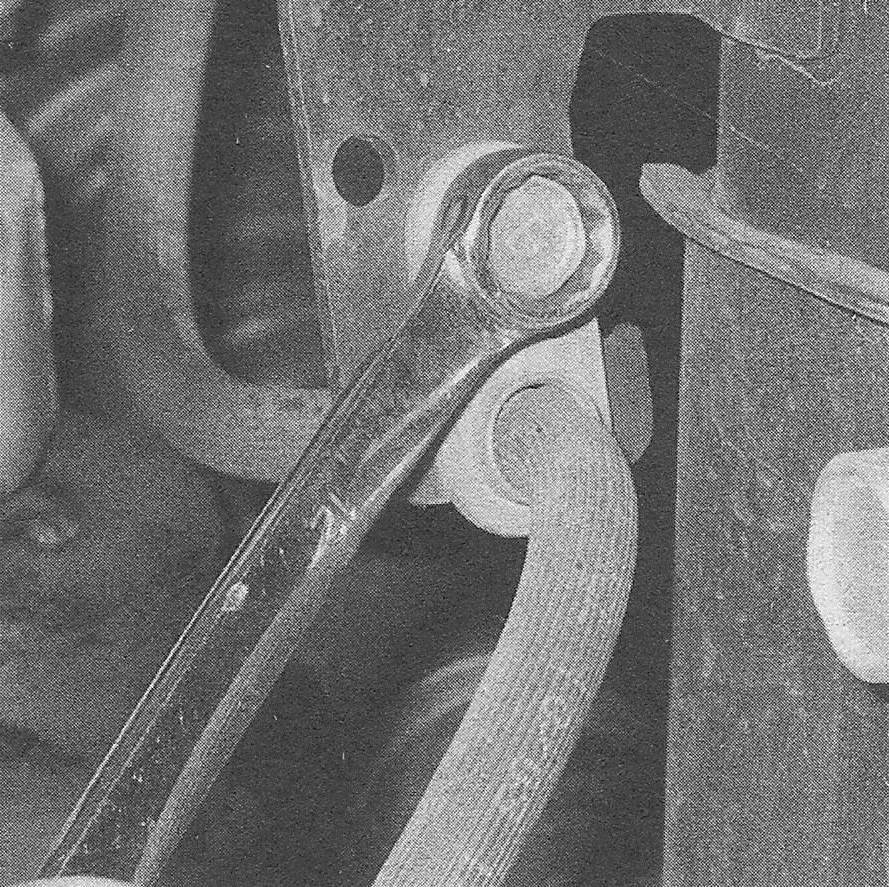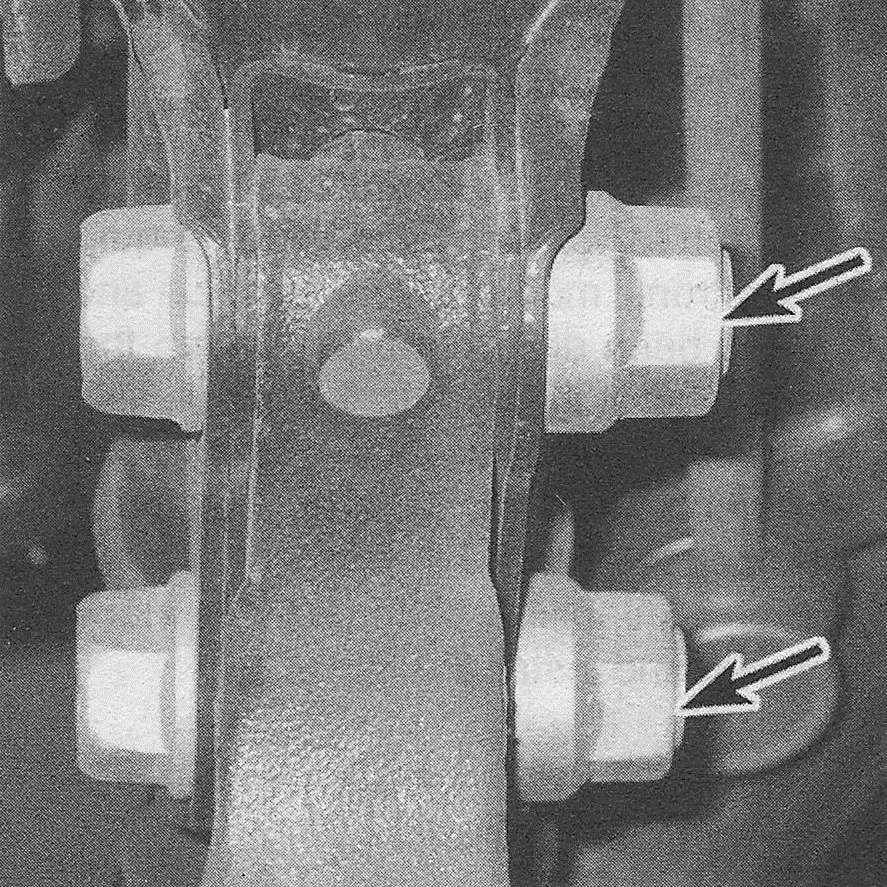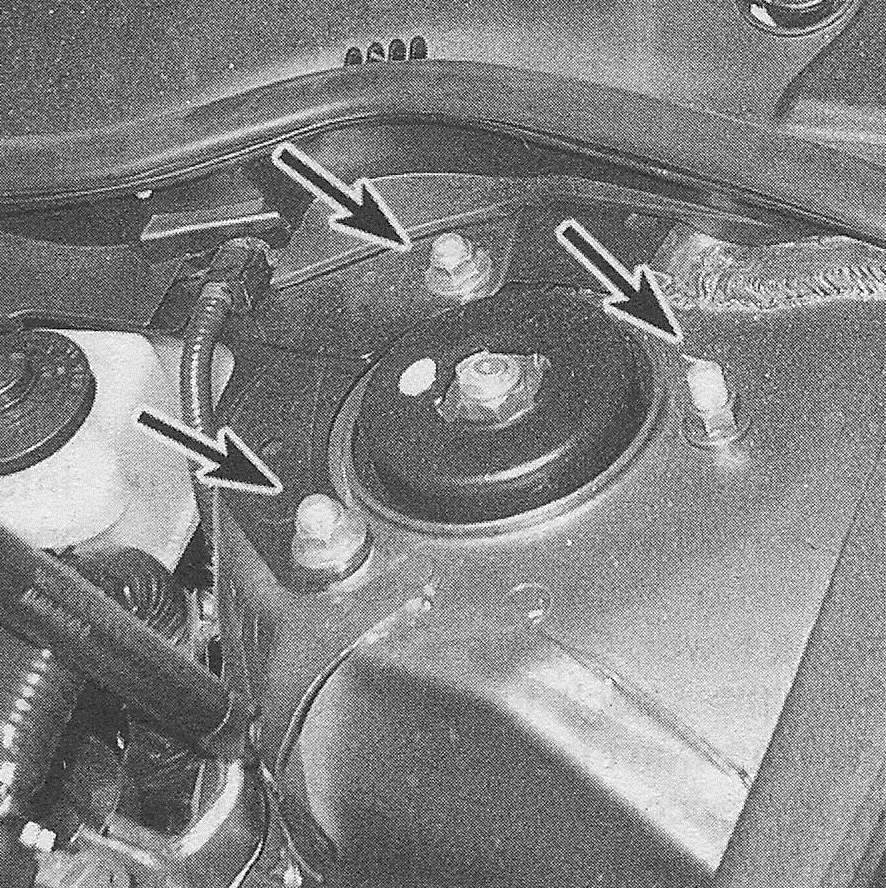Strut assembly (front) — removal, inspection and installation
Removal
1. Loosen the wheel lug nuts, raise the vehicle and support it securely on jack stands. Remove the wheel. Support the control arm with a floor jack.
2. Disconnect the stabilizer bar link end from the strut (see illustration 2.4).
3. Remove the brake hose bracket and the speed sensor wiring harness from the strut (see illustration).
3.3 Detach the brake hose from the strut bracket

4. On models equipped with electronic modulated suspension, remove the shock absorber cap and disconnect the shock absorber wiring harness. If the strut is to be disassembled, loosen, but do not remove, the damper shaft (center) nut (this will require a special socket if the vehicle is equipped with electronic modulated suspension; check with your local auto parts store or tool dealer).
5. Remove the strut-to-knuckle nuts (see illustration) and knock the bolts out with a hammer and punch.
3.5 To disconnect the lower end of the strut from the steering knuckle, remove these two nuts and knock out the bolts with a hammer and punch

6. Separate the strut from the steering knuckle. Be careful not to overextend the inner CV joint. Also, don’t let the steering knuckle fall outward, as the brake hose could be damaged.
7. Support the strut and spring assembly with one hand and remove the three strut- to-shock tower nuts (this is only if the strut is going to be disassembled) (see illustration). On models equipped with electronic modulated suspension, loosen (but do not remove) the nut in the center of the strut (this is only necessary if the strut is going to be disassembled). Remove the assembly out from the fender well.
3.7 To disconnect the upper end of the strut from the vehicle body, remove these three nuts — do not lose the two spacer washers under the shock tower brace (if equipped) at the inner stud

Warning: Don’t remove the large nut in the center
Note: Some models have a front suspension brace between the tops of the two shock towers that is retained by the same nuts that secure the strut to the body. At the inner stud, there are two spacer washers under the brace that are easy to lose when removing the strut.
Inspection
8. Check the strut body for leaking fluid, dents, cracks and other obvious damage that would warrant repair or replacement.
9. Check the coil spring for chips or cracks in the spring coating (this can cause premature spring failure due to corrosion). Inspect the spring seat for cuts, hardness and general deterioration.
10. If any undesirable conditions exist, proceed to the strut disassembly procedure (see Strut/coil spring assembly — replacement).
Installation
11. Guide the strut assembly up into the fender well and insert the three upper mounting studs through the holes in the shock tower. Once the three studs protrude from the shock tower, install the nuts so the strut won’t fall back through. This is most easily accomplished with the help of an assistant, as the strut is quite heavy and awkward.
12. Slide the steering knuckle into the strut flange and insert the two bolts. Install the nuts and tighten them to the torque listed in this Chapter’s Specifications.
13. Reattach the brake hose bracket to the strut. If equipped, install the speed sensor wiring harness bracket.
14. Install the wheel and lug nuts, then lower the vehicle and tighten the lug nuts to the torque listed in the Tune-up and routine maintenance Specifications.
15. Tighten the three upper mounting nuts to the torque listed in this Chapter’s Specifications.
16. If you’re working on a model equipped with electronic modulated suspension and the strut had been disassembled, tighten the nut in the center of the strut to the torque listed in this Chapter’s Specifications, using a special tool (check with your local auto parts store, dealer parts department or tool dealer regarding tool availability). Connect the electrical connector and install the cap.